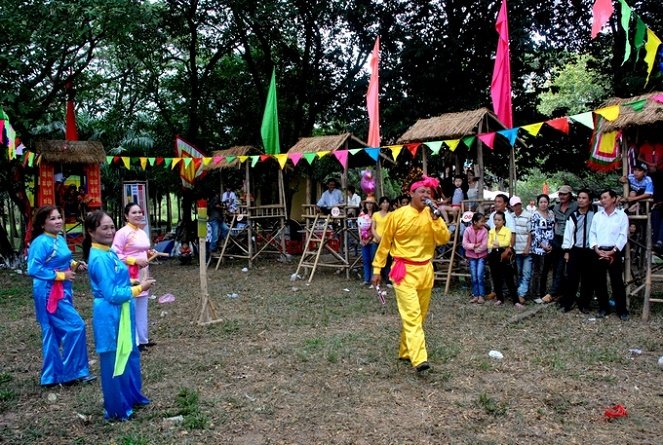Over the past few years, UNESCO-recognized Hoi An Ancient Town in central Vietnam has effectively tapped into “bai choi,” a folk game and form of art found in 11 provinces in the central region, for tourism purposes.
According to Wikipedia, “bai choi,” which is being considered for UNESCO recognition as an intangible world heritage, encompasses folk card playing and impromptu, sharp responses by the hosts.
Players sit in nine to 11 small sheds, where they listen attentively to the host shouting out the name of the card he/she has drawn.
To boost suspense and engagement from the players, the host recites a line of a poem or folk song which contains the card’s name.
“Bai choi”: A gem of Hoi An Ancient Town
Launched 16 years ago, the “Dem Pho Co Hoi An” (Hoi An Ancient Town Night) program, in which “bai choi” is a highlight, has been one of the town’s major tourism draws, a seminar last month heard.
According to statistics from Hoi An City’s Department of Trade and Tourism, local hotels see a 262.69 percent rise in reservations on the 15th day – or the full moon day – of the lunar calendar every month, when the Hoi An Ancient Town Night program is held, and the days before and after it.
Located in Quang Nam Province, Hoi An City includes the famous Hoi An Ancient Town in one of its wards. The town was declared a World Heritage Site by UNESCO in 1999.
The highlights of the program are the “bai choi” performances, which are held on outdoor stages along the Hoai River in the dim light of richly-colored lanterns.
Tourists, many of whom are foreigners, are welcome to take part in the games, which are hosted by boisterous artisans who sing very well.
Huynh Thi Thuy, an artisan who has performed “bai choi” in the old town for the past five years, shared that she and her fellow performers always make sure their performances retain the folk genre’s time-honored features while making allowable improvisations to enhance its appeal in the contemporary art scene.
According to Vo Phung, director of the Hoi An City Culture-Sports Center, apart from old lyrics, “bai choi” songs are also renewed with new, topical lyrics.
Teams of guides with good command of English have also been deployed to help foreign tourists grasp the games, rules, and meanings of the songs.
Several hosts have also learned English and can spell out the cards’ names so foreigners can join the games.
Kathy Griffin, an American tourist, marveled at the “bai choi” games and tunes she took part in.
She took great delight in the interactive nature and cultural richness, which helped her “touch” the native culture.
The activities, held right inside the old town, notably boost the town’s allure, she noted.
Further efforts to promote “bai choi”
Apart from “Hoi An Ancient Town Night,” “bai choi” performances are also held inside century-old houses, or at the Hoi An Traditional Art Theater.
According to the Hoi An City Culture-Sports Center, the city is now home to seven semi-professional “bai choi” troupes, who erect sheds and stages on demand.
The city currently boasts some 30 seasoned artisans, most over the age of 50, who are capable of hosting the “bai choi” games and singing the tunes.
Since 2003, the center has coordinated with the city’s education department to incorporate “bai choi” as an extracurricular activity in a number of elementary and junior high schools.
The center has also run a class to instill a passion for the genre and pass on the skills to children who live in and around the old town.
In recent years, the center’s artists have also showcased the genre in culture exchange programs in Asian and European countries.
Cultural authorities have been working since June on a dossier to apply for UNESCO recognition of "bai choi" as an intangible heritage.
The UNESCO-recognized Hoi An Ancient Town receives over 1.5 million tourists each year, including roughly 900,000 foreigners, according to the Hoi An City Culture-Sports Center.
Like us on Facebook or follow us on Twitter to get the latest news about Vietnam!



















































